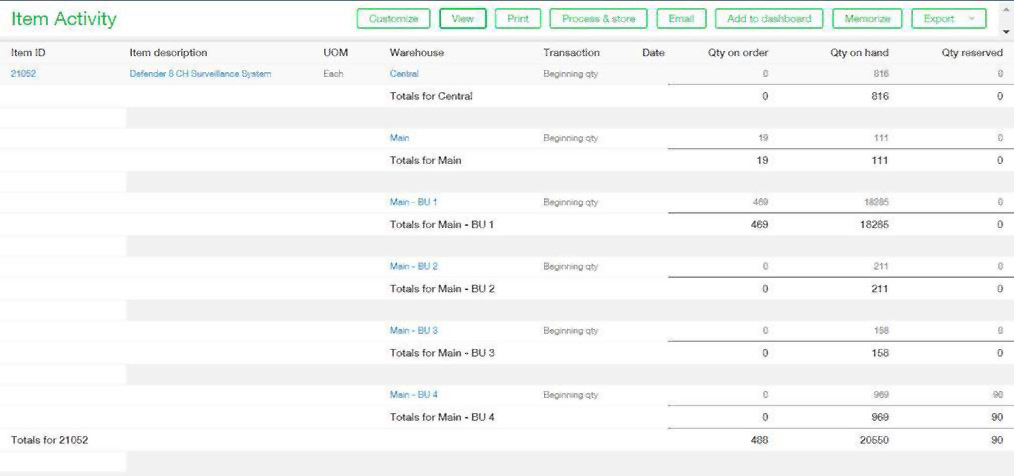
How does Sage Intacct streamline my inventory processes?
- Inventory provides templates, both standard and custom, for adjustments, transfers, damaged goods, scrap, and more.
- Warehouse is a dimension that’s tracked on each transaction to help you keep track of where your inventory is at any given time.
- Inventory can be tracked by warehouse, aisle, row, lot, bin, and serial number so warehouse staff can go right to it.
- Replenishment settings on each item allow you to reduce outages and even automatically adjust for seasonal items.
How does Sage Intacct handle inventory cost accounting?
Because knowing the value of that inventory is essential to understanding your organization’s financial health, Sage Intacct helps you by calculating value based on your business requirements and capturing added costs such as shipping or value adds, so you can get to a true cost of goods. Sage Intacct provides costing methods to match your business, including standard, average, LIFO, and FIFO. Automated recalculations capture costs from previous or later periods, so profitability reporting is always accurate.

What inventory services does Sage Intacct integrate with?
Sage Intacct has more than a dozen warehouse technology partners that cover a range of specialties. You can find a list of technology partners at https://marketplace.intacct.com. You can also create custom integrations using Sage Intacct Web Services APIs.
Does Sage Intacct include kits and kitting?
With Sage Intacct, you can group inventory items for kitting. You can manage them as independent items that get kitted at fulfillment or manage them as stockable kits. You also have the flexibility of automated stock level adjustments when you either assemble or disassemble kits.
Having our inventory entries and adjustments entered automatically will certainly add to our productivity and save hours every month, while giving us better visibility into what’s happening with our inventory.
Kim Wegener, Director of Finance at Powell’s City of Books.


